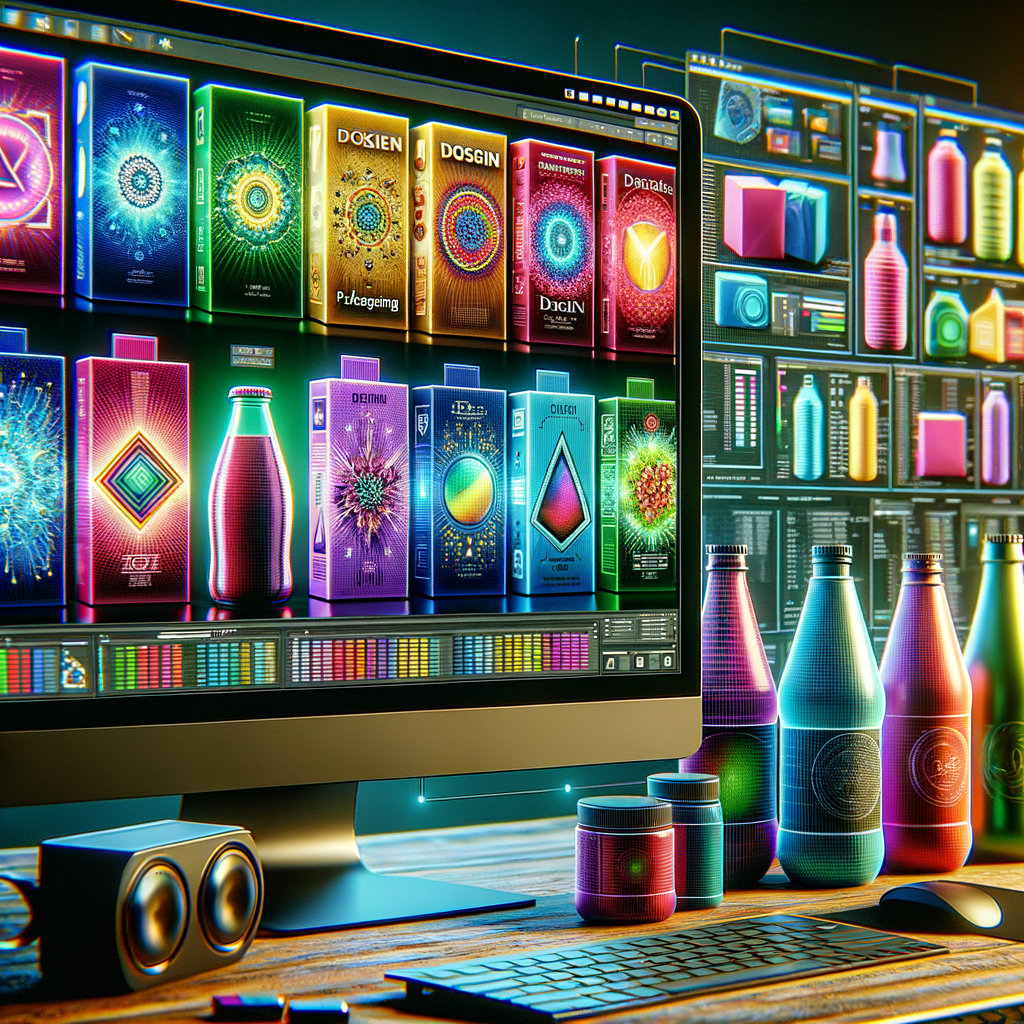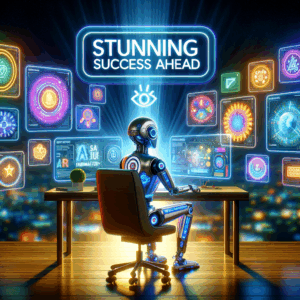
AI-Driven Packaging Mockups: Must-Have Solutions For Success
- Understanding AI-Driven Packaging Mockups
- The Importance of Effective Packaging
- Benefits of AI-Driven Packaging Mockups
- Rapid Prototyping
- Enhanced Creativity
- How AI-Driven Mockups Work
- Data Input and Analysis
- Visualization and Realism
- Key Features to Look For
- Customization Options
- User-Friendly Interface
- Collaboration Tools
- Export Quality
- Industries Benefiting from AI-Driven Mockups
- Food and Beverage
- Cosmetics
- E-commerce
- Apparel
- Best Practices for Using AI-Driven Mockups
- Research Your Audience
- Maintain Brand Consistency
- Seek Feedback Early
- Iterate and Adapt
- Future Trends in AI-Driven Packaging Mockups
- Sustainability Focus
- Increased Personalization
- Integration with Augmented Reality (AR)
- Conclusion
- FAQs
- 1. What are AI-driven packaging mockups?
- 2. How do AI packaging mockups speed up the design process?
- 3. What industries can benefit from AI-driven mockups?
- 4. Are AI mockup tools user-friendly?
- 5. Can AI-driven mockups help with sustainability?
- 6. How can I ensure brand consistency with AI mockups?
- 7. Should I seek feedback on mockups?
- 8. Will AI technology evolve in packaging design?
- 9. How do packaging mockups affect consumer decisions?
- 10. Can I use AI mockups for different types of products?
- References
Understanding AI-Driven Packaging Mockups
In today’s fast-paced market, businesses face constant pressure to innovate. The packaging is not just about containment anymore; it has become an essential element that influences consumer decisions. With the advent of technology, packaging mockups have transformed significantly. AI-driven mockups offer a blend of creativity and functionality, making them indispensable for success.
AI-generated packaging mockups utilize advanced algorithms to streamline the design process. This not only saves time but also enhances creativity by allowing designers to experiment with various styles and materials effortlessly. Businesses can quickly generate realistic images that showcase what their products will look like in the market. This technology serves as a game-changer, especially for startups and brands seeking to make a memorable impact.
The Importance of Effective Packaging
Packaging is often the first interaction consumers have with a product. It needs to convey the brand’s message while also being functional and eye-catching. Effective packaging can boost sales, increase customer loyalty, and create a strong brand identity. In an age where consumers are bombarded with choices, the right packaging can set a product apart.
According to a study, 72% of consumers say that packaging design influences their purchasing decisions. Therefore, investing in high-quality, AI-driven packaging mockups is not just an option; it’s a necessity. These mockups help businesses visualize their ideas accurately, allowing for immediate feedback and iterative design improvements.
Benefits of AI-Driven Packaging Mockups
Rapid Prototyping
One of the standout advantages of AI-driven packaging mockups is rapid prototyping. Traditional methods of creating mockups can be time-consuming and costly. Designers often rely on physical materials, which can delay the project. AI tools significantly reduce this time, allowing for quick adjustments and multiple versions.
For example, businesses can create multiple versions of a design within minutes. They can analyze different colors, shapes, and textures to see what resonates most with their target audience. Rapid prototyping empowers teams to be agile, adapting to market trends swiftly.
Enhanced Creativity
AI-driven mockups also enhance creativity. Imagine a setup where designers can experiment with countless design variations instantly. These tools often include features for style suggestions based on current trends, enabling designers to think outside the box.
Using AI, packaging designers can explore niche ideas that might not have occurred to them initially. The software can offer unique formats, color schemes, and graphic elements tailored to specific demographics. This technology encourages boundary-pushing creativity and leads to innovative concepts that attract customers.
How AI-Driven Mockups Work
Data Input and Analysis
AI-driven mockups start with data input. Designers upload images, logos, and specify dimensions. The software then analyzes this information, learning from existing designs and trends. It generates mockups that fit the specifications while also integrating creative suggestions.
With machine learning capabilities, the software improves over time. It learns what works and what doesn’t, making future iterations increasingly accurate and aligned with consumer preferences. This cycle of continuous learning is a key trait of AI technologies.
Visualization and Realism
The realism of AI-generated mockups cannot be understated. These tools use powerful rendering engines to create lifelike images that reflect how the packaging will look in real life. Potential customers can visualize the product better, improving the marketing strategy.
Furthermore, businesses can use these visuals across various platforms, from websites to social media. High-quality mockups elevate the brand image and convey professionalism. The more realistic and compelling the presentation, the more likely consumers will engage.
Key Features to Look For
Customization Options
When choosing an AI-driven packaging mockup tool, customization options are critical. The software should allow users to adjust every aspect of the design, from materials to graphics. A versatile tool can adapt to different brands, products, or market niches.
User-Friendly Interface
A user-friendly interface streamlines the design process. Designers should not have to navigate complex menus. Intuitive software enables quick learning, allowing teams to focus on creativity rather than technical hurdles.
Collaboration Tools
In a world where teamwork is essential, collaboration tools are invaluable. The best AI-driven mockup software allows team members to share ideas, provide feedback, and make edits in real time. These features facilitate smoother workflows and enhance communication.
Export Quality
Lastly, consider the export quality offered by the platform. High-resolution images are crucial for marketing materials. Ensure that the tool allows for easy export in various formats suitable for print and digital use.
Industries Benefiting from AI-Driven Mockups
Food and Beverage
The food and beverage industry has greatly benefited from AI-driven mockups. Packaging must be both captivating and functional to attract consumers. Beautiful mockups can showcase the product’s freshness and appeal. They also help in adhering to regulatory standards, ensuring that all necessary information is clearly displayed.
Cosmetics
In the cosmetics industry, branding is vital. Packaging not only serves a purpose, but it also articulates the brand’s identity. AI-driven mockups allow cosmetic brands to experiment with extravagant designs and materials that stand out. Brands can present their products in aesthetic ways that attract the target demographic.
E-commerce
E-commerce has risen dramatically, especially post-pandemic. Online shoppers rely heavily on visuals to make purchasing decisions. AI mockups play a significant role in creating product images that catch the eye. High-quality visuals help in reducing return rates and improving customer satisfaction.
Apparel
In the apparel industry, packaging doesn’t just protect items; it also enhances the overall experience. AI-driven mockups help brands visualize unique packaging solutions that reflect their style. This visual representation can be used not only for sales purposes but also for lookbooks and promotional materials.
Best Practices for Using AI-Driven Mockups
Research Your Audience
Understanding your target audience is essential. Use AI mockups to visualize designs that align with their preferences. Conduct surveys or gather feedback on initial mockups to refine your approach.
Maintain Brand Consistency
When creating packaging, brand consistency is key. Make sure that your mockups reflect your brand’s colors, typography, and messaging. This consistency builds brand recognition and fosters loyalty.
Seek Feedback Early
Don’t wait until the final design to seek feedback. Share early mockups with your team, stakeholders, or even consumers. Early feedback can save both time and resources by identifying issues before they escalate.
Iterate and Adapt
Don’t be afraid to iterate your designs. The beauty of AI-driven mockups lies in their capacity to allow for rapid changes. Use the data collected from audience interactions to adapt and improve your designs continuously.
Future Trends in AI-Driven Packaging Mockups
Sustainability Focus
Sustainability is becoming a crucial aspect of product packaging. Consumers demand eco-friendly solutions. AI-driven tools will adapt to create mockups that incorporate sustainable materials. This shift will meet consumer demand while also allowing brands to stay competitive.
Increased Personalization
Personalization is another trend on the rise. In the future, AI-driven mockups will allow brands to create tailored designs for specific consumer segments. Targeted packaging enhances the shopping experience, making consumers feel valued.
Integration with Augmented Reality (AR)
Integrating AI-driven mockups with AR technology represents an exciting frontier. Imagine consumers being able to visualize how a product will look in their own space through their smartphone. This experience can transform consumer engagement and decision-making.
Conclusion
AI-driven packaging mockups represent a cornerstone of successful product presentation in today’s market. They combine speed, creativity, and efficiency, making them a crucial tool for businesses aiming to remain competitive. By embracing this technology, brands can create captivating packaging experiences that resonate with consumers, enhance brand loyalty, and ultimately drive sales.
Investing in the right AI mockup tools paves the way for future success. It’s about creating not only functional packaging but also an unforgettable brand experience that stands out in the saturated market.
FAQs
1. What are AI-driven packaging mockups?
AI-driven packaging mockups are computer-generated representations of product packaging created using artificial intelligence to streamline the design process and improve creativity.
2. How do AI packaging mockups speed up the design process?
They allow for rapid prototyping and offer suggestions based on current trends, enabling designers to create multiple variations quickly.
3. What industries can benefit from AI-driven mockups?
Industries such as food and beverage, cosmetics, e-commerce, and apparel significantly benefit from AI-driven packaging mockups.
4. Are AI mockup tools user-friendly?
Yes, most AI mockup tools are designed to be user-friendly, allowing designers to focus on creativity rather than technical challenges.
5. Can AI-driven mockups help with sustainability?
Absolutely! These tools can facilitate the design of eco-friendly packaging solutions, aligning with consumer demand for sustainability.
6. How can I ensure brand consistency with AI mockups?
Make sure that your mockups reflect your brand’s colors, typography, and messaging consistently throughout the packaging design.
7. Should I seek feedback on mockups?
Yes, obtaining early feedback helps in refining designs and addressing any issues before final production.
8. Will AI technology evolve in packaging design?
Certainly! AI technologies are continually evolving, impacting various aspects of design, including personalization and integration with AR.
9. How do packaging mockups affect consumer decisions?
Appealing and functional packaging designs can heavily influence consumer purchasing decisions, making them critical for brand success.
10. Can I use AI mockups for different types of products?
Yes, AI mockups are versatile and can be adapted for various products across multiple industries.
References
1. Packaging Design — The Importance of Good Packaging
2. The Power of Packaging in Consumer Decision Making
3. AI in Packaging: Revolutionizing Design
4. Trends in Packaging Design for 2023
5. The Future of Packaging: Sustainability and Beyond

